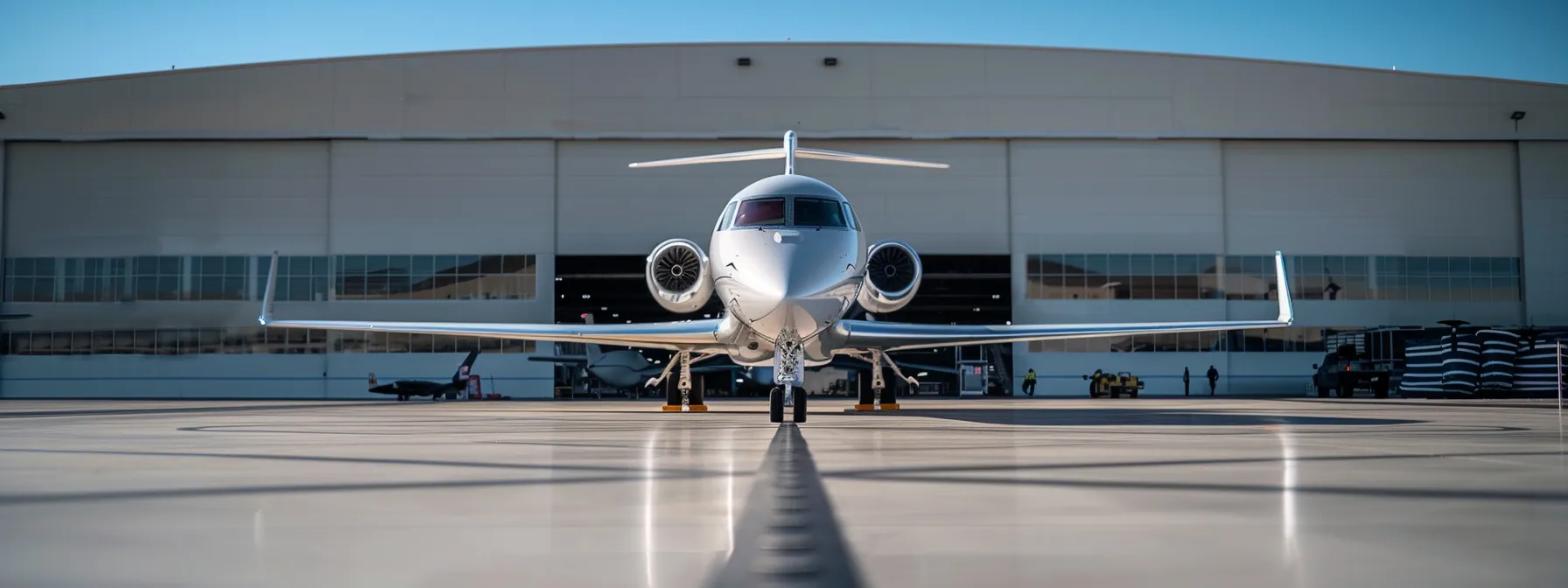FAA Initiatives to Improve General Aviation Safety Amid Runway Incursion Challenges
Runway incursions pose a significant threat to general aviation safety. The Federal Aviation Administration (FAA) has launched several initiatives to address this challenge, FAA Initiatives Boost General Aviation Safety for Pilots. This article explores the FAA’s key programs aimed at enhancing safety, including pilot education efforts and industry collaborations. Readers will gain insights into recent audits, successful case studies, and resources available to pilots. By understanding these initiatives, pilots can actively contribute to safer skies and more secure runway operations.
Essential Insights: Enhancing Runway & Aviation Safety
- The FAA focuses on reducing runway incursions through advanced technology and improved communication protocols
- Pilot education emphasizes effective communication, situational awareness training, and use of flight simulators
- Collaboration with industry stakeholders enhances safety strategies across all sectors of aviation
- Data-driven analysis of incident reports and pilot feedback informs targeted risk management strategies
- Future initiatives include AI-powered safety systems and proposed changes to hangar safety regulations
FAA Initiatives for General Aviation Safety

The Federal Aviation Administration (FAA), as the civil aviation authority in the United States, has launched several initiatives to enhance general aviation safety. These efforts focus on reducing runway incursions and improving overall operational safety for pilots and aircraft operators.
One key initiative targets runway safety through advanced technology and improved communication protocols. The FAA has implemented new runway incursion detection systems at major airports, helping to prevent potential collisions and enhance situational awareness for both pilots and air traffic controllers.
To address the growing complexity of modern aviation, the FAA encourages pilots to pursue advanced training, including aviation bachelor degrees. These programs provide comprehensive education on safety practices, regulations, and emerging technologies in the aviation business.
The FAA also collaborates with industry partners to develop and implement best practices for runway operations. This cooperative approach ensures that safety measures are practical and effective for all segments of general aviation, from recreational flyers to business jet operators.
The runway stretched out, a silent sentinel of safety. Beyond its markings lay a world of potential danger, waiting to be understood.
Runway Incursions and Their Impact on Aviation Safety

Runway incursions pose a significant threat to aviation safety, affecting both general and business aviation sectors. These incidents occur when aircraft, vehicles, or people enter restricted areas on runways without proper clearance. The pilot in command plays a crucial role in preventing such occurrences through vigilance and adherence to regulations.
The FAA has implemented various measures to combat runway incursions, including advanced flight simulator training programs. These simulators allow pilots to practice challenging scenarios and improve their decision-making skills in high-pressure situations. Additionally, enhanced server systems now provide real-time data to air traffic controllers, improving situational awareness on the ground.
Business aviation operators face unique challenges in managing runway safety. The fast-paced nature of corporate travel often puts pressure on flight crews to meet tight schedules. However, the FAA emphasizes that safety must always take precedence over business considerations, urging operators to prioritize thorough pre-flight planning and communication.
To address the complex issue of runway incursions, the FAA continues to refine its regulations and safety protocols. This ongoing process involves collaboration with industry stakeholders, analysis of incident data, and integration of new technologies. By staying proactive, the FAA aims to create a safer operating environment for all aviation sectors.
The runway stretched out, a silent witness to countless near-misses.
Recent Audits Highlighting Challenges in General Aviation
Recent audits of general aviation safety have revealed ongoing challenges in runway incursion prevention. These audits, conducted by the FAA and independent agencies, highlight the need for improved training at aviation colleges and flight schools. The findings suggest that enhanced education on runway safety procedures could significantly reduce incursion risks.
The audits also examined the unique challenges faced by glider operations at general aviation airports. Glider pilots often share runways with powered aircraft, creating potential conflicts. Recommendations include developing specialized communication protocols for mixed-use airfields to enhance safety for all operators.
Airlines and general aviation operators alike face scrutiny in these audits. The reports stress the importance of consistent safety practices across all sectors of aviation. This includes standardized procedures for runway operations and improved coordination between air traffic control and flight crews.
The FAA is using these audit results to shape new initiatives for general aviation safety. These efforts focus on integrating advanced technologies, refining pilot training programs, and fostering a culture of continuous improvement within the aviation community. By addressing the identified challenges, the FAA aims to reduce runway incursions and enhance overall safety in general aviation.
Safety concerns lingered after the audits. The FAA stepped up, ready for action.
Key FAA Programs Implemented to Enhance Safety
The FAA has launched key programs to enhance general aviation safety, focusing on pilot training, technology integration, and new regulations. These initiatives aim to improve skills for first officers and regional airline pilots, leveraging advanced aviation technology. The programs incorporate elements from popular courses like Sporty’s Learn to Fly, emphasizing the importance of comprehensive safety reporting in reducing runway incursions.
Pilot Training Enhancements
The FAA has implemented comprehensive pilot education programs to enhance safety in general aviation. These initiatives focus on improving pilots’ understanding of visual flight rules and their application in various scenarios, particularly during runway operations. By leveraging advanced databases, the FAA ensures that training materials remain current and relevant to evolving safety concerns.
Recognizing the importance of passenger security, the FAA has integrated practical exercises into pilot training curricula. These exercises simulate real-world situations, allowing pilots to practice decision-making skills in high-pressure environments. This hands-on approach helps pilots develop a deeper understanding of safety protocols and their critical role in preventing runway incursions. For more detailed insights into improving flight safety and pilot training techniques, exploring comprehensive guides can offer valuable knowledge. An example includes Instrument Flight Rules (IFR) – A Comprehensive Guide for Pilots, which dives deeper into the regulations and strategies for navigating complex flying conditions.
Technology Integration for Safety Monitoring
The FAA has partnered with flight colleges and the Aircraft Owners and Pilots Association to integrate advanced safety monitoring technologies across national airspace. These systems provide real-time data on aircraft movements, helping controllers and pilots navigate complex instrument flight rules scenarios more effectively.
Colleges with aviation programs are now incorporating these cutting-edge technologies into their curricula, preparing future pilots for the evolving landscape of aviation safety. This proactive approach ensures that the next generation of aviators is well-equipped to handle the challenges of modern flight operations, particularly in high-traffic environments where runway incursions pose significant risks.
- Implementation of real-time safety monitoring systems
- Collaboration with educational institutions and industry associations
- Integration of advanced technologies into pilot training programs
- Focus on improving safety in complex flight environments
New Safety Regulations and Compliance Measures
The Federal Aviation Administration has introduced new safety regulations and compliance measures to address the challenges of runway incursions in general aviation. These regulations, which align with standards set by the European Union Aviation Safety Agency, encompass both fixed-wing aircraft and helicopters, ensuring comprehensive coverage across various aviation sectors.
To support these new measures, the National Business Aviation Association has collaborated with the FAA to develop tailored compliance programs for commercial aviation operators. These programs focus on integrating the latest Federal Aviation Regulations into daily operations, helping pilots and operators maintain the highest safety standards while navigating the complex landscape of modern aviation.
The FAA’s safety programs laid a foundation. But pilots hold the key to preventing runway incursions. Mastering situational awareness FAA’s safety programs
Importance of Pilot Education in Preventing Runway Incursions

Pilot education plays a crucial role in preventing runway incursions and enhancing general aviation safety. The FAA emphasizes three key areas: effective communication protocols, situational awareness training, and the use of flight simulators. These elements are essential for student pilots pursuing their pilot certificate and experienced flight instructors alike. By focusing on these aspects, the FAA aims to reduce accidents and improve safety standards across the industry, including major carriers like Delta Air Lines. For more insights into situational awareness, you might explore mastering situational awareness.
Effective Communication Protocols
The FAA emphasizes effective communication protocols as a cornerstone of runway incursion prevention. Pilots are trained to use clear, concise language during radio transmissions, especially when navigating complex airport environments. This skill becomes particularly crucial during instrument rating training, where precise communication can make the difference in safety-critical situations.
Safety management systems in general aviation now incorporate advanced communication training modules. These programs simulate various scenarios, from routine flight time operations to emergency firefighting situations, helping pilots develop robust communication skills. By mastering these protocols, pilots enhance their ability to navigate safely and efficiently, reducing the risk of runway incursions. For more detailed insights on communication importance in aviation, explore Understanding CTAF in Aviation: A Guide to Effective Communication.
Situational Awareness Training
Situational awareness training forms a crucial component of pilot education at aerodrome-based flight training centers. This specialized training equips pilots with the skills to assess and respond to dynamic environments, reducing the risk of runway incursions. Pilot colleges incorporate altitude awareness exercises and real-time decision-making scenarios to enhance students’ ability to maintain spatial orientation during critical flight phases. For more information on safety programs and resources, visit FAA Safety.
forms a crucial component of pilot education at aerodrome-based flight training centers. This specialized training equips pilots with the skills to assess and respond to dynamic environments, reducing the risk of runway incursions. Pilot colleges incorporate altitude awareness exercises and real-time decision-making scenarios to enhance students’ ability to maintain spatial orientation during critical flight phases.
The FAA collaborates with leading flight training institutions to develop comprehensive situational awareness programs. These initiatives focus on integrating advanced simulation technologies that replicate complex airport layouts and traffic patterns. By exposing pilots to diverse scenarios, including low-visibility conditions and high-traffic situations, the training prepares them to navigate challenging aerodrome environments safely and efficiently.
Use of Flight Simulators and Real-World Scenarios
The FAA has incorporated advanced flight simulators into pilot training programs to enhance safety and prevent runway incursions. These simulators allow pilots to practice navigating complex airport environments and handling instrument meteorological conditions without real-world risks. By simulating emergency scenarios, pilots can develop critical decision-making skills essential for maintaining safety during actual flights.
Real-world scenario training complements simulator sessions, providing pilots with practical experience in diverse operational conditions. The FAA encourages flight schools to integrate Airport Safety News (ASN) reports into their curricula, offering students insights into recent incidents and best practices for avoiding similar situations. This comprehensive approach to training ensures pilots are well-prepared for the challenges they may face when pursuing their license and operating in various airport environments.
- Advanced flight simulators for realistic training
- Practice in instrument meteorological conditions
- Emergency scenario simulations
- Integration of real-world examples from ASN reports
- Practical experience in diverse operational conditions
Pilots trained well avoid runway mishaps. The FAA teamed up with airlines to make flying safer.
Collaborations Between FAA and Industry Stakeholders
The FAA collaborates with industry stakeholders to address aviation safety concerns, including runway incursions and bird strikes. These partnerships bring together expertise from commercial airlines, general aviation operators, and airport authorities to develop comprehensive strategies for hazard mitigation. By leveraging collective knowledge, the FAA aims to enhance safety protocols across all sectors of aviation.
One key focus of these collaborations is improving baggage handling procedures to reduce runway incursions. The FAA works with airlines and ground crews to implement advanced tracking systems and streamline loading processes. These efforts not only enhance safety but also improve operational efficiency for commercial flights.
Industry partnerships have led to innovative solutions for bird strike prevention. The FAA coordinates with wildlife biologists and airport managers to develop effective habitat management strategies around airfields. These measures help reduce the risk of potentially catastrophic collisions between aircraft and birds.
Collaborative research initiatives between the FAA and aviation manufacturers focus on developing new technologies to enhance runway safety. These projects explore advanced sensor systems and automated alert mechanisms to provide pilots with real-time hazard information. By fostering innovation through industry partnerships, the FAA continues to push the boundaries of aviation safety.
Partnerships forged, safety improved. But data holds deeper truths.
Analyzing Data and Incidents for Continuous Improvement
The FAA’s commitment to improving general aviation safety involves rigorous analysis of incident data and pilot feedback. By leveraging reporting systems and advanced safety data analysis techniques, the agency identifies patterns in aircraft operations that contribute to runway incursions and loss of control incidents. This data-driven approach, combined with insights from pilot experiences, enables the FAA to develop targeted risk management strategies for civil aviation, fostering a culture of continuous learning and improvement.
Reporting Systems and Safety Data Analysis
The FAA has implemented robust reporting systems that align with International Civil Aviation Organization standards, enabling comprehensive safety data analysis. These systems collect information on runway incursions, excursions, and other incidents, providing valuable insights for improving general aviation safety. By analyzing statistics from various sources, including Airbus and other manufacturers, the FAA can identify trends and develop targeted interventions.
To enhance the effectiveness of these reporting systems, the FAA has introduced digital exams for pilots and air traffic controllers. These assessments test knowledge of runway safety protocols and help identify areas for improvement in training programs. The integration of advanced data analytics tools allows the FAA to process vast amounts of information quickly, facilitating rapid response to emerging safety concerns.
- Implementation of ICAO-aligned reporting systems
- Collection and analysis of runway incursion and excursion data
- Introduction of digital exams for safety knowledge assessment
- Utilization of advanced data analytics for trend identification
- Rapid response capabilities for emerging safety concerns
Incorporating Feedback From Pilot Experiences
The FAA actively incorporates feedback from pilot experiences to enhance general aviation safety. Air traffic controllers and designated pilot examiners provide valuable insights on real-world challenges faced during runway operations. This feedback helps the FAA refine its training programs and safety protocols, addressing specific issues that pilots encounter in various flying conditions. FAA safety initiatives are critical in maintaining a safe flying environment for all.
To gather comprehensive feedback, the FAA has implemented a system that allows pilots to share their experiences anonymously. This approach encourages open communication about safety concerns without fear of repercussions. The feedback system covers various aspects of aviation, from student pilot loans through Sallie Mae to complex air transport operations, ensuring a holistic view of the industry’s safety landscape.
Safety concerns lingered. But the FAA’s initiatives brought change.
Case Studies of Successful FAA Safety Initiatives

The Federal Aviation Administration’s safety initiatives have yielded significant improvements in general aviation. This section examines two key areas: the impact of new technology on safety outcomes and pilot testimonials on training effectiveness. These case studies highlight how universities, business aircraft operators, and pilots have benefited from FAA programs addressing controlled flight into terrain and bird strike risks.
Impact of New Technology on Safety Outcomes
The FAA’s implementation of advanced technology has significantly improved safety outcomes in general aviation. Top aviation colleges have integrated these innovations into their programs, enabling students to gain hands-on experience with cutting-edge safety systems. These technologies, often detailed in comprehensive pdf guides, have proven particularly effective in reducing runway incursions and enhancing situational awareness for pilots.
One notable program introduced by the FAA has enabled real-time tracking and alert systems at some of the best aviation colleges. This initiative has yielded impressive results, with participating institutions reporting a marked decrease in runway incursion incidents. The success of this program has led to its expansion across more flight schools and general aviation airports, further enhancing safety standards industry-wide:
- Implementation of advanced tracking systems
- Real-time alert mechanisms for pilots and controllers
- Integration of safety technology into college curricula
- Reduction in runway incursion incidents at participating institutions
- Expansion of successful programs to more aviation facilities
Pilot Testimonials on Training Effectiveness
Pilots who have completed the FAA’s enhanced safety training programs at colleges that offer aviation degrees report significant improvements in their ability to handle complex runway scenarios. The Flight Safety Foundation has recognized these programs for their effectiveness in reducing runway incursions among general aviation pilots. Graduates consistently praise the practical, hands-on approach that prepares them for real-world challenges.
Professional pilots with years of experience have noted the positive impact of ongoing education initiatives on their situational awareness and decision-making skills. Many attribute their increased confidence in navigating busy airports to the FAA’s focus on continuous improvement in pilot training. This emphasis on lifelong learning has fostered a culture of safety that extends beyond formal education settings into daily flight operations.
The success stories were clear. Now, the industry looked to the horizon for new ways to keep pilots safe. Advancements in weather forecasting for safer flights
Future Directions for General Aviation Safety Improvements
The FAA is poised to introduce new technologies and regulations to enhance general aviation safety. Upcoming advancements focus on improving search and rescue operations and aviation medicine practices. The agency aims to enable more effective Safety Management Systems (SMS) and expand public access to safety resources. These initiatives will address runway incursion challenges and promote a culture of continuous improvement in the aviation community.
Upcoming Technological Advancements
The FAA is developing advanced runway incursion prevention systems, incorporating artificial intelligence and machine learning algorithms. These technologies, inspired by exhibits at the National Air and Space Museum, will enhance situational awareness for aircraft pilots and air traffic controllers, significantly reducing the risk of collisions on runways and taxiways.
In collaboration with e3 aviation association, the FAA is exploring innovative cargo tracking solutions to improve safety and efficiency in general aviation operations. These advancements aim to create a safer aviation culture by providing real-time data on aircraft weight and balance, crucial for maintaining proper flight characteristics and preventing runway overruns:
- AI-powered runway incursion prevention systems
- Machine learning algorithms for enhanced situational awareness
- Advanced cargo tracking solutions for weight and balance management
- Real-time data integration for improved flight safety
- Collaborative efforts with industry associations to foster a safety-focused culture
Proposed Changes in Regulations
The FAA is proposing new regulations to standardize hangar safety protocols across general aviation airports, including those in Canada. These changes aim to reduce the risk of runway incursions caused by improper aircraft storage and movement within hangar areas, while also addressing the rising cost of hangar maintenance for small airplane owners.
To support these initiatives, the FAA is collaborating with aviation colleges to develop specialized training programs focused on runway safety and hangar management. These courses will be integrated into existing aviation curricula, ensuring future pilots and airport personnel are well-versed in the latest safety practices before they enter the workforce.
The future of aviation safety shines bright, but the journey doesn’t end here. Let’s explore the wealth of resources available to pilots committed to safer skies.
Resources for Pilots on General Aviation Safety Practices

The FAA offers a wealth of resources for pilots to enhance their understanding of general aviation safety practices. These include comprehensive online courses, interactive webinars, and downloadable safety guides focused on runway incursion prevention and proper airport navigation techniques. FAA Safety Team provides these materials to help pilots maintain and improve their flying skills.
Pilots can access the FAA’s Safety Team (FAAST) website for up-to-date information on safety seminars, training events, and educational materials. This platform serves as a central hub for pilots seeking to improve their skills and stay informed about the latest safety protocols in general aviation. How FAA Initiatives Boost General Aviation Safety for Pilots
The Aircraft Owners and Pilots Association (AOPA) collaborates with the FAA to provide additional safety resources, including free online courses and safety quizzes. These tools help pilots assess their knowledge and identify areas for improvement in runway safety practices.
E3 Aviation Association members can access exclusive safety content through the association’s digital library, which includes expert interviews and specialized training modules on runway incursion prevention. This resource complements the FAA’s initiatives by offering tailored safety information for various pilot experience levels.
Safety in the skies demands constant vigilance. Let’s explore the FAA’s initiatives to keep pilots and passengers secure.
FAQs About FAA Safety Initiatives and General Aviation
The FAA’s safety initiatives for general aviation focus on reducing runway incursions and enhancing pilot education. These programs aim to improve communication protocols, situational awareness, and technology integration across airports and flight schools.
Pilots can access numerous resources through the FAA’s Safety Team website, including online courses and webinars on runway safety. E3 Aviation Association members benefit from exclusive safety content in the association’s digital library, complementing FAA initiatives. E3 Aviation Association members benefit from exclusive safety content in the association’s digital library, complementing FAA initiatives. How FAA Initiatives Boost General Aviation Safety for Pilots
The FAA collaborates with industry stakeholders to develop and implement safety measures. These partnerships involve commercial airlines, general aviation operators, and airport authorities, fostering a comprehensive approach to hazard mitigation:
- Development of advanced runway incursion prevention systems
- Implementation of new communication protocols
- Integration of cutting-edge technologies in pilot training
- Continuous analysis of safety data and incident reports
Future FAA initiatives include the introduction of AI-powered safety systems and proposed changes to hangar safety regulations. These advancements aim to further reduce runway incursion risks and promote a culture of continuous improvement in aviation safety.
Frequently Asked Questions
What are the main FAA initiatives aimed at improving general aviation safety?
The FAA’s key initiatives for enhancing general aviation safety include the WINGS Pilot Proficiency Program, Safety Management Systems (SMS), Aviation Safety Reporting System (ASRS), and the “Fly Safe” campaign. These programs focus on continuous education, risk management, voluntary reporting, and targeted safety awareness to reduce accidents and improve pilot skills.
How does the FAA address runway incursion challenges in general aviation?
The FAA addresses runway incursion challenges in general aviation through pilot education programs, improved signage and markings, enhanced communications protocols, and technology implementations like Runway Status Lights. These efforts aim to increase situational awareness and reduce the risk of accidents on the ground at airports. For more on enhancing aviation safety and education, consider exploring the extensive resources provided by mastering situational awareness. For additional information and resources on aviation safety, the FAA Safety Team offers comprehensive guidance and education programs.
What role does pilot education play in preventing runway incursions?
Pilot education plays a crucial role in preventing runway incursions by enhancing situational awareness, teaching proper communication protocols, and reinforcing adherence to airport signage and markings. Comprehensive training equips pilots with the knowledge and skills necessary to navigate complex airport environments safely, reducing the risk of unauthorized runway entry. Mastering situational awareness
How does the FAA collaborate with industry stakeholders to enhance safety?
The FAA collaborates with industry stakeholders through various initiatives, including the Aviation Safety Information Analysis and Sharing (ASIAS) program, safety management systems, and advisory committees. These partnerships foster data sharing, best practices exchange, and joint problem-solving to enhance aviation safety across the industry.
Where can pilots find resources on FAA safety practices for general aviation?
Pilots can access FAA safety resources for general aviation through the FAA Safety Team (FAAST) website, www.faasafety.gov. This comprehensive platform offers courses, seminars, and publications on various safety topics. Additionally, the AOPA Air Safety Institute and E3 Aviation Association (www.e3aviationassociation.com) provide valuable safety materials tailored for general aviation pilots. How FAA Initiatives Boost General Aviation Safety for Pilots
How FAA Initiatives Boost General Aviation Safety for Pilots

